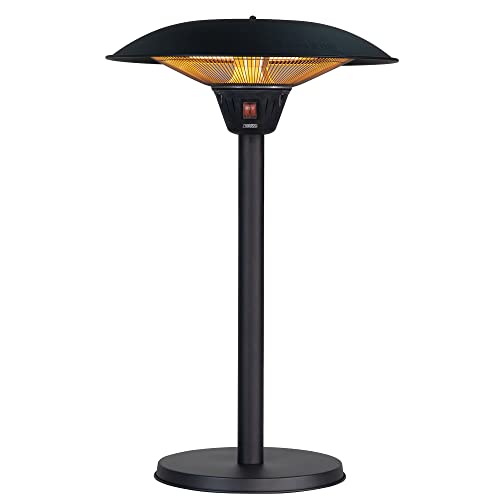It Is The History Of Outdoor Electric Infrared Heaters In 10 Milestones
Outdoor Electric Infrared Heaters: The Efficient Solution for Year-Round Comfort
As outdoor home become progressively popular, house owners are looking for efficient solutions to extend their pleasure beyond the summer season. One such option that has actually gotten prominence over the last few years is the outdoor electric infrared heater. This technology not only supplies heat however also boosts outdoor aesthetics and convenience. This short article will explore the functions, advantages, installation, and maintenance of outdoor electric infrared heaters, along with frequently asked concerns to provide a detailed summary of the subject.
Comprehending Infrared Heating Technology
Infrared heaters run on the principle of convected heat transfer. Unlike standard heating techniques that warm the air, infrared heaters directly heat items and individuals in their vicinity. This makes infrared heaters exceptionally effective for outdoor use, where traditional heating approaches typically lead to heat loss due to wind and vast open spaces.
How Infrared Heaters Work
- Convected heat: Infrared heaters produce infrared radiation that is absorbed by surfaces and people, offering direct warmth without requiring to heat the surrounding air.
- Energy Source: Most outdoor infrared heaters use electricity as their main energy source, making them easy to run without the need for gas lines or intricate setups.
- Immediate Heating: These heaters offer instant heat, meaning no waiting duration for the air to warm up, allowing users to take pleasure in immediate comfort as quickly as the heater is switched on.
Benefits of Outdoor Electric Infrared Heaters
The adoption of outdoor electric infrared heaters in homes and industrial spaces can be attributed to numerous advantages:
1. Energy Efficiency
Infrared heaters transform a high percentage of electrical energy into heat, making them an ecologically friendly choice. They focus heat straight on people and objects instead of warming the air, resulting in lower energy costs and minimized carbon footprints.
2. Versatile Applications
Outdoor electric infrared heaters are appropriate in various settings consisting of:
- Patios
- Decks
- Balconies
- Outdoor dining locations
- Patios
- Poolsides
3. Weather condition Resistance
These heaters are developed to hold up against outdoor aspects, with many models including water resistant real estate and advanced weatherproofing innovation. This resilience makes them suitable for year-round usage.
4. Peaceful Operation
Unlike traditional gas heaters that can produce noise when venting or starting up, infrared heaters operate silently, making sure that outdoor gatherings stay serene and pleasurable.
5. Space-Saving Design
Infrared heaters can be found in numerous types, including wall-mounted, ceiling-mounted, or portable stand-alone units. This versatility enables house owners to select models that best fit their space without jeopardizing on performance.
Installation and Maintenance Considerations
Installation Tips
- Location: Place heaters in locations where individuals will be investing the most time, and think about the heater's radius of heat coverage.
- Height: For wall or ceiling-mounted heaters, setup at the right height is vital for optimal heat.
- Electrical Requirements: Ensure that the electric outlet can handle the heater's wattage requirements safely.
Maintenance Tips
- Routine Cleaning: Dust and debris can collect on the heater, so regular cleansing is required to guarantee effective operation.
- Inspect Wiring: Inspect electric connections occasionally to avoid any prospective electrical risks.
- Seasonal Storage: If heaters are not required in the off-season, consider saving them in a dry location to extend their life expectancy.
Comparing Outdoor Electric Infrared Heaters: A Summary Table
Here's a comparison of various types of outdoor electric infrared heaters, showcasing their primary functions and typical applications.
Heater Type
Source of power
Coverage Area
Mounting Type
Common Usage
Wall-Mounted
Electric
As much as 150 sq ft
Wall
Patios, verandas
Ceiling-Mounted
Electric
Approximately 200 sq ft
Ceiling
Porches, open areas
Portable Stand-Alone
Electric
Approximately 300 sq ft
Ground
Outdoor occasions, camping
In-Ground or Propane
Gas
As much as 600 sq ft
Ground
Larger locations, business
FAQs About Outdoor Electric Infrared Heaters
1. Can infrared heaters be left outdoors in the rain?
Yes, many designs are weatherproof and developed to be left outdoors in numerous weather condition conditions. Nevertheless, Electric Garden Warming Devices is recommended to check the manufacturer's specs relating to water resistance.
2. How much electrical power do electric infrared heaters utilize?
Electric infrared heaters usually take in between 1,000 to 2,500 watts, depending on the design. For instance, a 1,500-watt heater uses roughly 1.5 kilowatts per hour.
3. Can I use infrared heaters indoors as well?
Yes, while these heaters are mostly created for outdoor usage, numerous models are safe and reliable for indoor settings, especially in locations where extra heat is needed.
4. For how long can I run my infrared heater?
Infrared heaters can typically be run for extended periods, however it is a good idea to follow the manufacturer's guidelines for continuous operation and advised usage cycles to prevent getting too hot.
5. Are infrared heaters safe for children and family pets?
Yes, infrared heaters are normally safe. Nevertheless, as with any heating appliance, it is best to supervise young kids and pets around the heater to prevent unexpected burns.
Outdoor electric infrared heaters offer a practical and efficient solution for preserving comfort in outdoor settings, enabling property owners and their guests to delight in fresh air even when temperature levels dip. With their ease of installation, low-maintenance requirements, and versatility, these heaters are a worthy financial investment for anybody aiming to enhance their outdoor living experience throughout the year. As outdoor spaces continue to evolve, integrating infrared heaters can ensure that they remain inviting, functional, and conducive to relaxation and enjoyment despite the season.
